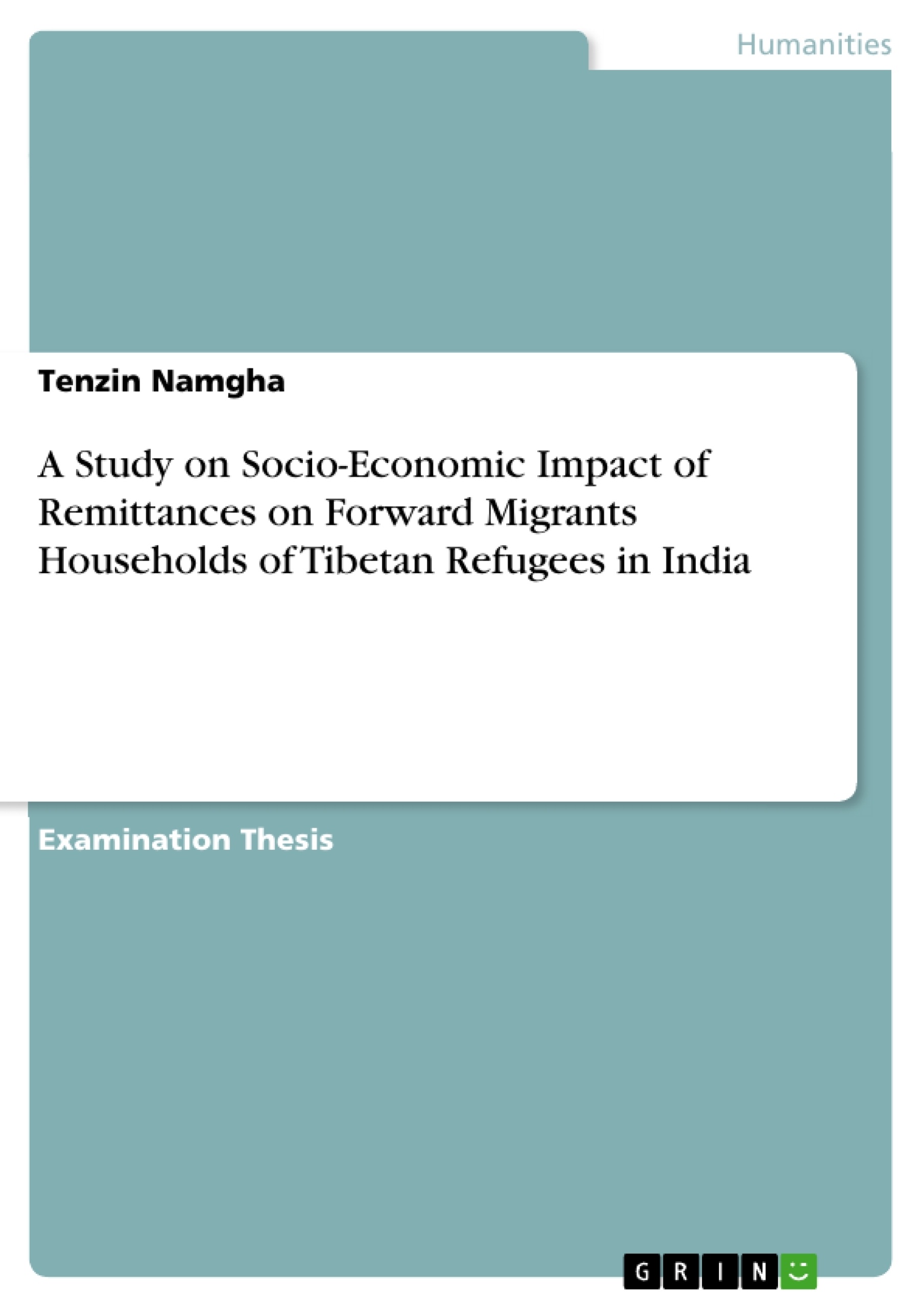Due to the invasion and occupation of Tibet by China, the first wave of Tibetan refugees seeking asylum came to India and neighbouring countries like Bhutan and Nepal in 1959. At the time, India, Nepal and Bhutan were economically and socially backward countries. India opened up its economy in the 1990’s and it paved the way for socio-economic development of the country. Tibetan migrants were also able to use this opportunity for their own growth and economic development. The rise in awareness levels helped Tibetan migrants realize that they could further advance their individual and community growth by seeking job opportunities abroad. Thus, the first wave of migrants left for North America, Canada and European countries in early 1990’s and they were able to send home remittances in dollars and pounds which fetched good exchange rate in India against the rupees. The flow of remittances from abroad enhanced the livelihood of Tibetan refugees in India and triggered a chain migration to the west.
In this study, it focuses on the aspect of remittance and development on Tibetan refugee who has been settled in India for more than 5 decades and relies on remittances. The details of the profile of Tibetan diaspora will be discussed in chapter 4.
Inhaltsverzeichnis (Table of Contents)
- CHAPTER-1
- INTRODUCTION.
- MIGRATION AND DEVELOPMENT
- MIGRATION AND REMITTANCES.
- BACKGROUND OF THE STUDY.
- NEED OF THE STUDY..
- SCOPE OF THE STUDY
- LIMITATIONS OF THE STUDY.
- CHAPTER SCHEME
- CHAPTER-2.
- REVIEW OF LITERATURE
- GLOBAL STUDIES ON REMITTANCE
- STUDIES ON REMITTANCES IN INDIA ………………………..
- STUDIES RELATED TO TIBETAN REFUGEES
- CHAPTER-3
- METHODOLOGY
- STATEMENT OF THE PROBLEM.
- GOALS
- HYPOTHESES.
- VARIABLES OF THE STUDY.
- THEORETICAL FRAMEWORK.
- OPERATIONAL TERMS USED IN THE STUDY
- RESEARCH METHODOLOGY.
- PILOT STUDY ANALYSIS
- FINAL METHODOLOGY..
- STATISTICL ANALYSIS
- SUMMARY.
- CHAPTER-4
- PROFILE OF STUDY AREA..
- UNIVERSAL DEFINITION OF THE TERM REFUGEE.
- REFUGEES IN INDIA...........
- TIBETAN REFUGEES IN INDIA..
- Historical Background of the Tibetan Refugees ......
- EXILE GOVERNMENT OF TIBETAN REFUGEE IN INDIA
- SOCIO-ECONOMIC DETAILS OF TIBETAN REFUGEES IN INDIA
- CHALLENGES FACED BY TIBETAN REFUGEES IN INDIA.
- MIGRATION OF TIBETAN REFUGEES TOWARDS DEVELOPED COUNTRIES
- FORWARD MIGRANT.
- STUDY AREAS
- SUMMARY OF CHAPTER..
- CHAPTER-5.
- ANALYSIS AND INTERPRETATION
- ASSISTANCE FROM VARIOUS ORGANISATIONS.
- EDUCATION OF TIBETAN REFUGEES IN EXILE.
- STATUS OF HEALTH OF TIBETAN REFUGEES IN INDIA
- SOCIO-ECONOMIC CHARACTERISTICS OF HEAD OF THE HOUSEHOLDS.....
- SOCIO-ECONOMIC PROFILE OF FORWARD MIGRANTS.
- CHARACTERISTICS OF REMITTANCE.
Zielsetzung und Themenschwerpunkte (Objectives and Key Themes)
This study aims to investigate the socio-economic impact of remittances on forward migrant households of Tibetan refugees in India. It seeks to analyze the role of remittances in improving the living standards and overall well-being of these households.
- The impact of remittances on the socio-economic conditions of Tibetan refugee households in India.
- The role of remittances in human capital development, financial capital development, and social capital development for these households.
- The influence of remittance patterns on the migration decisions of Tibetan refugees.
- The challenges and opportunities faced by Tibetan refugee households in managing and utilizing remittances.
- The relationship between remittances and the broader context of Tibetan refugee migration and development in India.
Zusammenfassung der Kapitel (Chapter Summaries)
The first chapter provides an introduction to the study, discussing the global context of migration and its impact on development. It delves into the specificities of Tibetan refugee migration in India, highlighting the role of remittances. Chapter 2 reviews relevant literature on remittances, focusing on global studies, studies in India, and those related to Tibetan refugees.
Chapter 3 outlines the methodology employed in the study, including the research design, data collection methods, and statistical analysis techniques. Chapter 4 provides a detailed profile of the study area, discussing the historical background of Tibetan refugees in India and their socio-economic conditions.
Chapter 5 presents the analysis and interpretation of the findings, including data on the assistance provided by various organizations, the education and health status of Tibetan refugees, and the socio-economic characteristics of forward migrants and their remittances.
Schlüsselwörter (Keywords)
The study focuses on the socio-economic impact of remittances on forward migrant households of Tibetan refugees in India. Key terms include migration, development, remittances, human capital, financial capital, social capital, Tibetan refugees, India, and socio-economic conditions.
- Quote paper
- Tenzin Namgha (Author), 2016, A Study on Socio-Economic Impact of Remittances on Forward Migrants Households of Tibetan Refugees in India, Munich, GRIN Verlag, https://www.grin.com/document/359477



